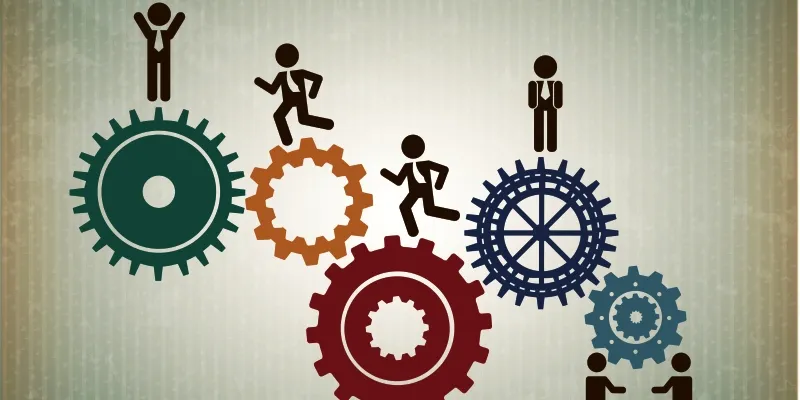India's biggest "Make in India" initiative should be the skilling of the youth
In her recent book “Dreamers”, which features poignant stories about some of our country’s youth, Snigdha Poonam narrates the story of Sachin Ahuja. Sachin has a typical 9-6 job selling insurance. From 7 pm to 8 pm, he lifts weights - so far, so good. It’s his life post 9 pm that’s unexpected – for then Sachin is a ‘gau rakshak’ (cow protector), and they, as Snigdha says, “are the most feared men in India today.”

Is Sachin’s story an aberration or the new norm? The book narrates many such stories of people like Sachin, who are a part of our country’s youth, aged 15-35 years. A group that comprises about one third of our population today. A group that often gets glowingly mentioned as our “demographic dividend”. As if they are committed to give us yearly returns until eternity. A group that needs the best education and the most jobs. And a group that is in desperate need for a better future.
Are they resigned to be “dreamers” or can the future really be theirs?
Let’s start with a few statistics.
Right to future, not Education
In 2008, we saw the initiation of the Right to Education programme to ensure every child got access to education. A generation of children got free education till Class 8. In 2016, these children completed Class 8. What happens after that? Did we get them ready for their future?
A surprising answer comes from Pratham’s ASER report 2016, “Beyond Basics”. This year, Pratham studied the 14-18-year-olds of our country. Their insights show that,
In 2016, a quarter of all children in Standard VIII in rural India were unable to read a Standard II level text and a third were unable to solve a 3-digit by 1-digit division sum. Not surprisingly, dropout rates in secondary grades are very high, especially for girls.
So, what did we really solve then? Where is the road to higher education for the ones who need that, and the path to job readiness for all? Formal Higher Education today addresses just 15 percent of the youth. Of course, one can argue that in the world enabled by technology, anyone can learn. There are online courses and certifications that are filling in the lacunae formal education has left.
But fact is, the demographic dividend that is our youth is getting squeezed by an invisible rope that ties the uncertainty of future jobs together with a lack of understanding of self-competencies and choices in a knot which seems impossible to remove. In fact, the Pratham report states that many youngsters from rural India and smaller towns still aspire for government jobs rather than generating employment.
As if these were not enough problems choking the already gasping demographic dividend, two other issues are lurking around the corner.
The digital gender divide
Women comprise about 49 percent of our population of one billion people, but, in the usage of internet, women are still far behind men. Just about 29 percent of India’s internet users are women. Sahil Kini, Principal, Aspada Investments, in his column “Bharat Rough Book” in the Mint newspaper, says India accounts for nearly half the digital gender gap worldwide, even though we account for 12 percent of the total internet population. This, along with the high rate of secondary drop-out of girls, places us at the danger of increasing the gender gap in employability. No wonder then, that the World Economic Forum report on Gender Gap (November 2017) placed us at 108 out of 144 countries.
For all the talk about womens’ empowerment, maybe ensuring that they get educated and digitally literate is a way to think through their own empowerment.
Job transitions in the age of AI/automation
For a second, let’s forget the youth and consider an average 40-year-old in an information technology job in India. He is part of the generation of engineers whose careers got engineered to meet the rising demand from the Indian information technology industry. His job is no more secure than the future of the youth of India if he has not re-skilled himself. According to McKinsey, that figure stands at 600 million expected job transitions in India due to automation and as Artificial Intelligence reshape jobs.

It is easy to say we need a nation of job-creators not seekers. Easier to say the data on job growth itself is wrong. There are many more informal jobs being created.
The real question is how we can remove the shackles from our demographic dividend? Let’s move from the problems to the solutions. There are brilliant minds who are trying to tackle this challenge. We need more of them, and we need more from them.
Job readiness and skilling
Instead of a singular focus on learning outcomes, there are companies that are trying to focus on a multi-modal way of linking skills to the jobs of the future. While automation will shift the nature of jobs, it will also create new jobs, and intrinsic skills will find many people suitable for such jobs if they have the right information and training.
One simple solution is to help people align their innate competencies to the skills required for mass-scale jobs, rather than pushing everyone towards Board Exams and mathematics and English learning outcomes, which for many, will remain tough.
Manish Sabharwal, Chairman, Team Lease Services, Bengaluru, puts the solution succinctly in his interviews. It’s not a question of job growth according to him. It’s a question of productivity growth and wage growth and labour laws which help us sustain that.
Education and life-long learning
Solving for skilling starts right from education. Our current curriculum is still stuck in an era that might require our youth to time travel to the past. All measures on “Quality of Education” quote mathematics and English learning outcomes in standardised tests.
Preparing our children for the future might involve rethinking how we help our children to become problem solvers and thinkers so that they can design their own careers rather than waiting to join the latest career bandwagon. And that change can start in individual schools, through simple interventions on job-readiness skills.
It will also involve us bringing an element of life-long learning at every step of our careers. Not just to get to a job which may become extinct in a few years. A “growth-mindset” every company and every individual needs to incorporate in their lives. The rising number of “Life-Coaches” in India stands testimony to the life-long confusion lack of life-long learning can bring.
Financial Literacy
Beyond the narrow confines of the way we define education today, as job benefits become more uncertain, we need to get smarter with how we manage our savings. And financial literacy is a subject that is strangely out of syllabus in schools. Even when we grow up, savings are considered “taxing” for most of us who are not financially inclined. Maybe it’s time to change that.

To simplify the idea of savings and bring financial education as a core part of learning, for each one of us.
With a problem as complex and vast as skilling and jobs, we will need a host of solutions and collaborations that can work together to make a difference.
As for demographic dividend, maybe it’s time to let it breathe. And live. Without the burden of unreasonable expectations.







